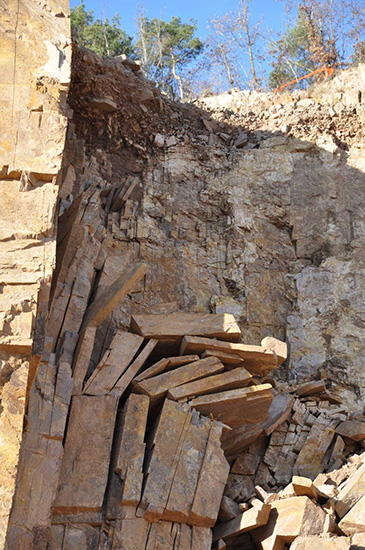Porphyry
Porphyry is a volcanic rock which belongs to the so called “Atesina porphyry platform”. It takes its name from the area of Albiano, in Italy. Albiano is the home, in every sense, of this natural stone.
The porphyry stone is the result of a long and intense volcanic activity, that began 260 millions of years ago and which pursued for several millions of years by alternating eruptive and standstill phases.
Porphyry is quarried from an ignimbrite classified as “rhyolitic ignimbrite” and the workable thickness is about 100-200 meters, because of the lack of stratification. Porphyry is the only natural stone with a quarry natural surface extremely flat .
Its There are the chemical composition (over 70% silica, about 14% alumina, 8% alkali and small percentages of iron, calcium and magnesium), the mineral composition (quartz, sanidine and plagioclase crystals with a smaller quantity of biotite and of pyroxenes in a vitreous paste) and the marked porphyry features that determinate the technical characteristics of this natural stone.
The high compression breaking point, the high resistance to chemical agents and the high sliding and rolling friction make of porphyry a very versatile and noble material which can be used thanks to its physical and mechanical characteristics and to its wide range of colours for the most diverse applications.
Actually, it’s a material that always guarantees excellent results even in the case of rather difficult and original projects.


